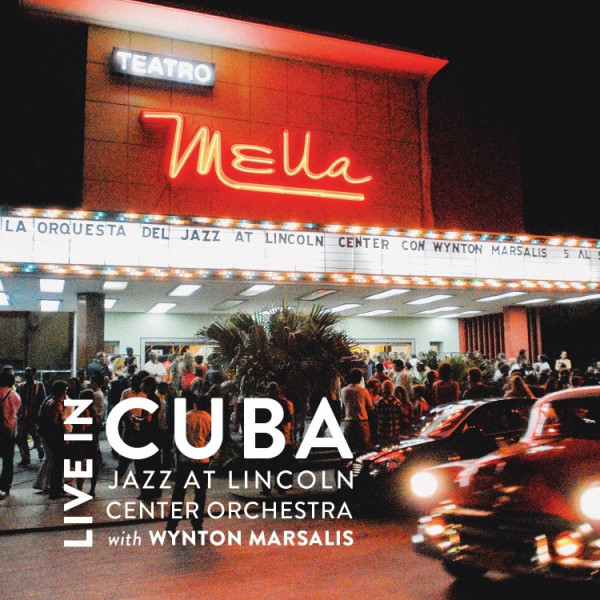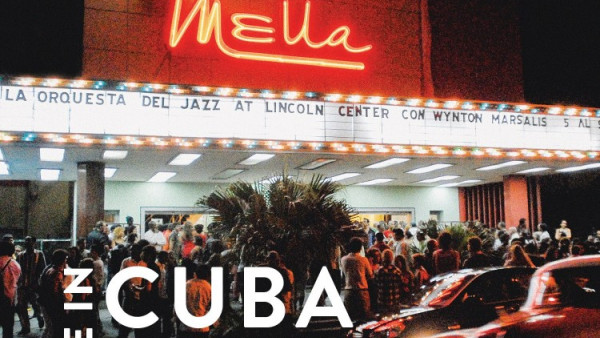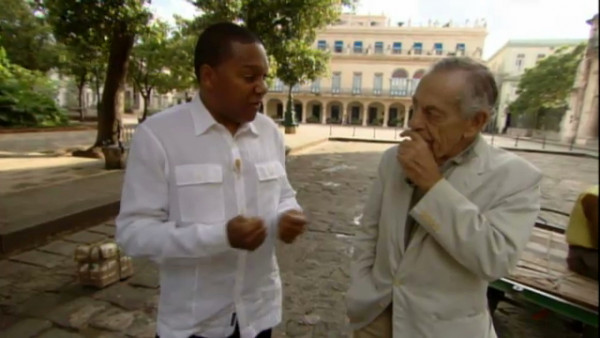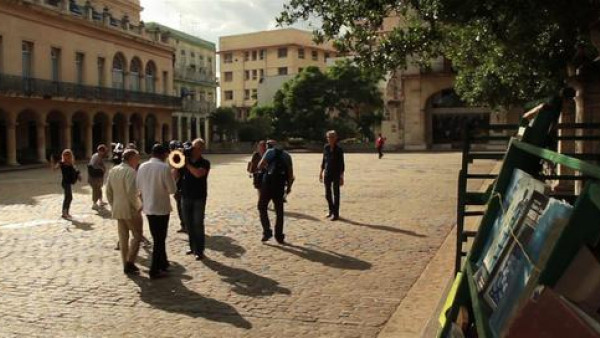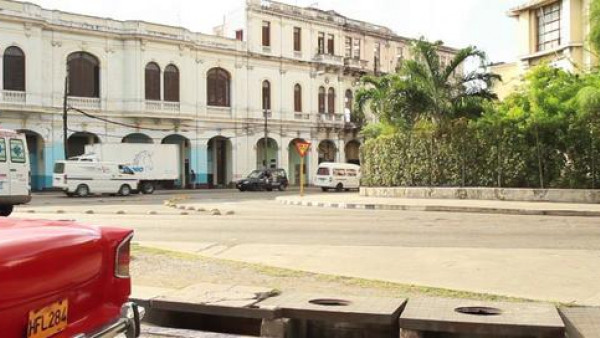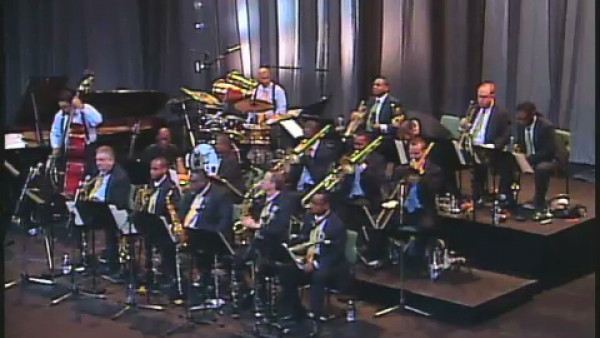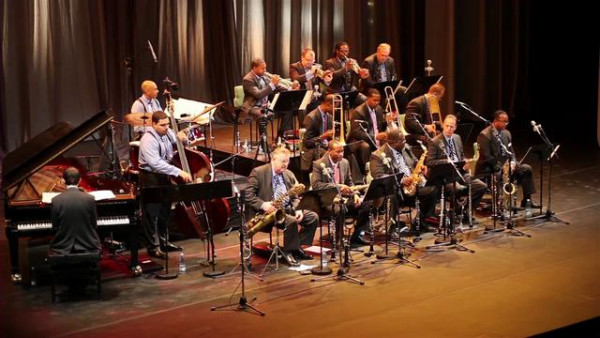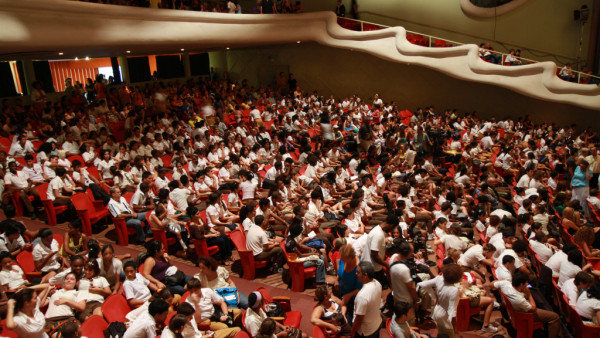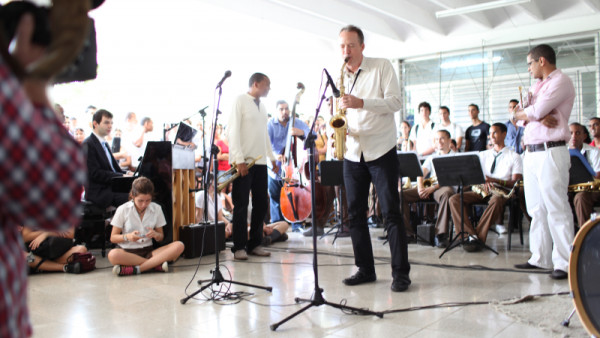U.S. - Cuban love affair continues, via jazz
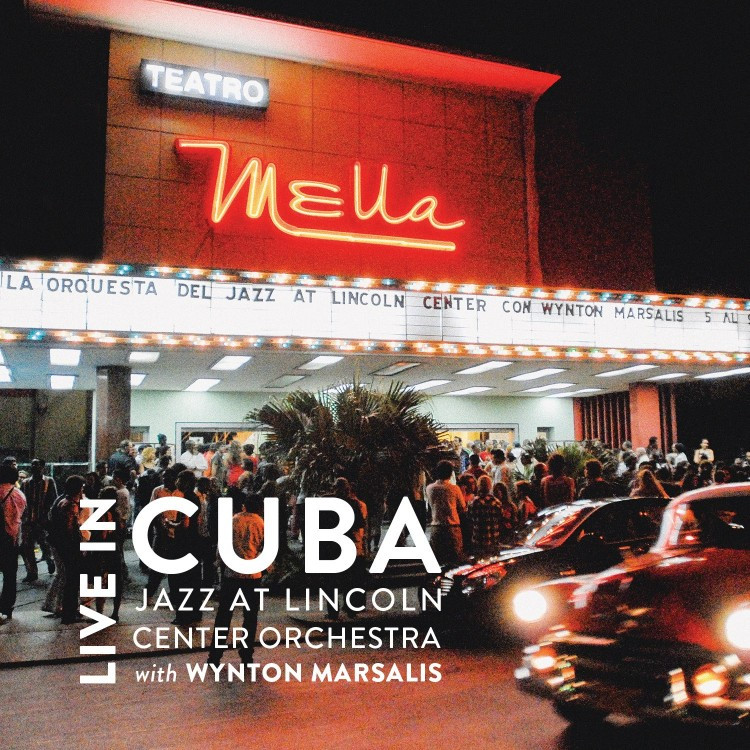
Long before the U.S. flag rose above the reopened American embassy in Havana last Friday, jazz was linking two feuding nations.
Long before President Barack Obama and Cuban President Raul Castro went on TV last December to announce a thaw in relations between the countries, jazz musicians from both places nurtured ties that transcended politics.
For though the U.S. and Cuba have been at odds since the American embargo of the island nation in the early 1960s, the two cultures share a jazz lineage dating back to ancient Africa. More recently, before Fidel Castro took power in 1959, American jazz stars such as Frank Sinatra and Nat “King” Cole performed triumphantly in Havana. And the artistic partnership of American trumpeter Dizzy Gillespie with Cuban masters such as Chano Pozo, Machito and Mario Bauza made Afro-Cuban jazz a global sound.
Regardless of how you feel about the start of normalization between the countries, there’s no doubt that jazz lovers are benefiting, as the pace of musical interaction quickens. Here are three encouraging developments.
‘Live in Cuba’
In October of 2010, America’s greatest large jazz ensemble – the Jazz at Lincoln Center Orchestra – ventured to Havana for a week’s worth of concerts and camaraderie. Only those who were inside Havana’s Teatro Mella can say exactly how it felt to hear trumpeter Wynton Marsalis lead his state-of-the-art orchestra before an audience of robustly cheering Cubans.
But the two-disc document of that event, “Live in Cuba: Jazz at Lincoln Center Orchestra with Wynton Marsalis” (to be released on Friday), certainly illuminates the exalted level of the music-making that occurred, as well as the intensity of the public response. Playing Afro-Cuban repertoire, jazz classics and contemporary works, the JALC Orchestra may have done more for American-Cuban relations in a single week than all the political rhetoric generated from both sides of the Straits of Florida for the past 60-plus years.
Anyone who has attended JALC concerts in Orchestra Hall, Ravinia or any other Chicago-area venues during the past two decades-plus already knows all about the virtuosity of the ensemble and its signature, plush orchestral voicings. But there’s something more on “Live in Cuba”: The band’s urgency of expression, dynamism of rhythm, range of instrumental color and ensemble cohesion are quite striking to behold.
JALC bassist Carlos Henriquez’s “2/3’s Adventure” opens the recording, leaving no doubt that these musicians speak Afro-Caribbean idioms with compelling fluency (Henriquez served as the tour’s musical director). When – in the midst of the piece – the band dramatically cuts the tempo, allowing ample room for trumpeter Marcus Printup’s clarion solo above a seductively swaying backbeat, there’s no question we’re in Havana. The audience expresses its enthusiasm without inhibition.
But the JALC musicians don’t pander to Cuban expectations, instead offering a range of repertoire for which they’re widely admired. The cascading section writing in Marsalis’ “Inaki’s Decision” (from his “Vitoria Suite”), the bracingly modern gestures and unflinching dissonances of JALC reedist Ted Nash’s “Dali” (from his “Portrait in Seven Shades”) and the blues-drenched exhortations of vocalist Chris Crenshaw in “I Left My Baby” (from the Count Basie book) surely told the Cubans a great deal about what big-band American jazz can be, at its best.
And could any contemporary ensemble match the technical acuity the band achieves on Duke Ellington’s “Braggin’ in Brass”? Repeated hearings reaffirm the prowess of this work.
Of added significance: “Live in Cuba” is the first release from Jazz at Lincoln Center’s newly formed Blue Engine Records. Clearly the label is off to a powerful start.
Chicago Jazz Philharmonic
Last December, on the day Presidents Obama and Castro went on TV in their respective countries to trumpet their diplomatic breakthrough – Dec. 17 – Orbert Davis was in Havana rehearsing Cuban music students and members of his Chicago Jazz Philharmonic.
The rehearsal broke up when everyone rushed to the TV to watch the big announcement, and a few days later Davis and business partner Mark Ingram were on CBS TV’s “60 Minutes” discussing their cross-cultural journey.
Roughly three dozen of those Cuban students are expected to join the CJP onstage at the Auditorium Theatre on Nov. 13, when Davis conducts the American premiere of the piece he unveiled during that December visit in Cuba: “Escenas de la Vida: Patrimonio” (“Scenes from Life: Heritage”).
Though visas have yet to be approved for the Cubans, and though the CJP still needs to raise roughly $85,000 to cover travel and incidental expenses for the young artists, it’s clear that a project Davis started with his first trip to Havana in 2012 is bearing fruit.
In Cuba last year, “We played with the students, not for them,” says Davis. “We became more than friends, more like family. There was so much that was communicated, simply because of the language of music. … The arts speak a language that words can’t, and it sets the foundation for a deeper understanding that should be there.”
When Davis raises his baton during the Auditorium Theatre concert, we’ll hear for the first time exactly what kind of connection he and the Chicago Jazz Philharmonic have made with a new generation of Cuban musicians. In the meantime, the CJP is not only raising funds for the project – which was initiated with a $50,000 grant from the Chicago-based John D. and Catherine T. MacArthur Foundation – but is seeking in-kind contributions for meals, housing, coats and other daily needs the students will face.
“We want this to be about more than just the concert,” says Birdie Soti, executive director of the CJP. “We want the city to play host. We want to connect students with their peers.”
Should all the paperwork go through, the Chicago Jazz Philharmonic will have played a significant role in showing both Cuban and American audiences that there’s much more to the relationship between the two countries than political posturing.
Orbert Davis’ Chicago Jazz Philharmonic plays the American premiere of his “Scenes from Life: Heritage” at 7:30 p.m. Nov. 13 at the Auditorium Theatre, 50 E. Congress Pkwy.; $29-$68; chicagojazzphilharmonic.org or 312-573-8932; auditoriumtheatre.org or 800-982-2787.
Buena Vista farewell
You could say that America’s renewed love affair with Cuban music dates to the late 1990s, when the “Buena Vista Social Club” album and film reintroduced the country – and the rest of the world – to such titans of Cuban music as Compay Segundo, Ibrahim Ferrer and Ruben Gonzalez.
They’ve since passed away, but a few of the remaining greats played the Orquesta Buena Vista Social Club “Adios Tour” last Wednesday night at the Ravinia Festival in Highland Park. The pavilion and lawn were crowded for the occasion, the audience giving numerous ovations to two of the original Buena Vista stars: singer-guitarist Eliades Ochoa and vocalist Omara Portuondo. The 84-year-old Portuondo proved particularly effective in a sweeping, practically operatic version of “Besame Mucho.” Portuondo’s voice may have been a bit wobbly at some moments, but the way she rushed forth with some phrases, held back on others, showed folkloric music delivered at the level of high art.
Thanks to the aforementioned efforts of Wynton Marsalis’ JALC Orchestra and Orbert Davis’ Chicago Jazz Philharmonic, we can feel assured that even after the pioneers are all gone, their music will play on.
“Portraits in Jazz”: Howard Reich’s e-book collects his exclusive interviews with Frank Sinatra, Tony Bennett, Lena Horne, Ella Fitzgerald and others, plus profiles of early masters such as Louis Armstrong, Duke Ellington and Billie Holiday. Get “Portraits in Jazz” at chicagotribune.com/ebooks.
by Howard Reich
Source: Chicago Tribune

